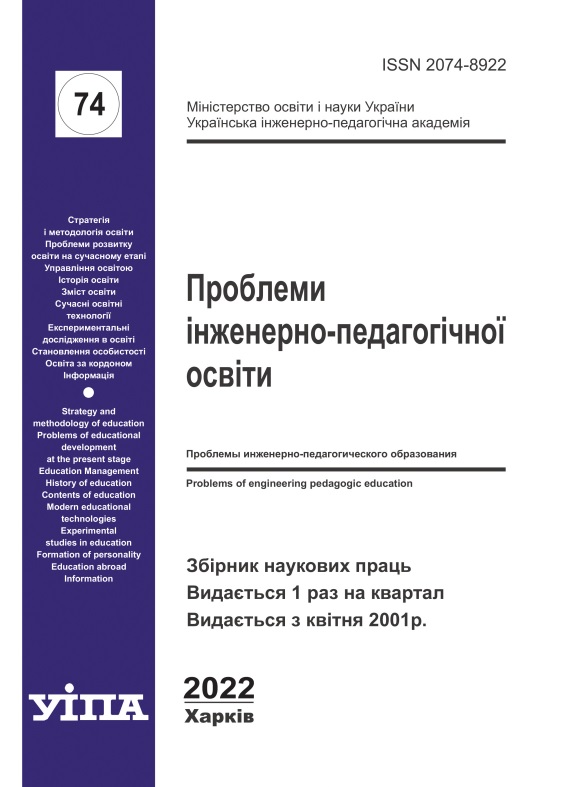Abstract
Changes in recent years in the system of higher education in Ukraine, the entry of Ukrainian free
education into a single global educational space, and the need to use distance education require rethinking
the goals and objectives of education, and learning strategies in various fields of science. The task of a Ukrainian language teacher is not only to teach international students the language system of the Ukrainian
language, which includes phonetics, vocabulary and grammar, but also to develop their ability to properly
assess the communicative situation when interacting with native speakers, read cultural codes contained in
Ukrainian, and adequately perceive signals of nonverbal communication (gestures, facial expressions, etc.)
of the interlocutor. In addition to reception, the purpose of teaching the Ukrainian language is to form a
willingness to produce speeches in accordance with the cultural, etiquette and language norms of the
Ukrainian linguistic and cultural community. Given the processes occurring in teaching methods, we have
proposed a systematic way of learning movement verbs at the initial stage of learning, which in a strict time
limit allows not only facilitating the perception of educational material, but also increasing the rate of
grammar, communication and study skills acquisition. According to many scholars, the verb itself is the most
complex grammatical category of the Ukrainian language, as it occupies the central place in the semantic
structure of the sentence.
At the first stage, when students study the accusative case, the verbs йти, ходити, піти are
introduced and the peculiarities of their use are clarified; later, the verbs їхати, їздити, поїхати are
introduced with an explanation about the differences in the ways of performing the action: йти пішки, but
їхати на автобусі, машині, etc. At the second stage, the basic verbs of movement without prefixes are
studied. It is advisable to introduce this topic at the end of the elementary course, when the basic values of
cases have been mastered. When studying the basic verbs of motion without prefixes, a list of relative verbs
of unidirectional and multidirectional motion is given and the differences in the nature of motion are
explained. At the third stage, verbs of movement with prefixes are studied. On the basis of the previously
considered verbs, derivatives are formed, the meaning of which depends on the word-building prefix. At the
fourth stage, figurative meanings of movement verbs are studied. This stage requires students to be fluent in
the Ukrainian language. On the basis of the language material used in classes, monologue language skills are
formed as well as the ability to convey the gist of a short text which students read or listen to. Tasks for texts
are aimed at checking the material to be actively assimilated, which involves answering questions,
composing dialogues, retelling texts, etc. The proposed approach promotes the rapid assimilation of the
meaning of movement verbs and the correct use of the chosen form in a particular speech situation. Clear
organization of educational materials and logically sustained step-by-step and stage-by-stage deployment
help remove psychological barriers in a short time, activate the knowledge acquired, generate interest and
stimulate motivation to learn the Ukrainian language.

This work is licensed under a Creative Commons Attribution-NonCommercial-NoDerivatives 4.0 International License.
Copyright (c) 2023 Problems of Engineer-Pedagogical Education

